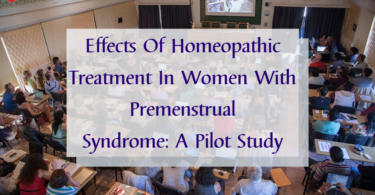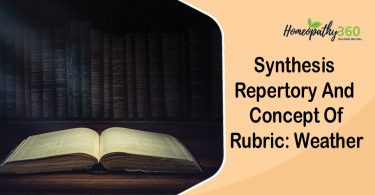Abstract
Susceptibility is the general quality of all living organisms to receive impressions and the power of reaction to stimuli. It represents a fundamental quality of the life that distinguishes the living organisms from non- living organisms. Concepts of some stalwarts on susceptibility and its usage in Homoeopathy have been summarized in this article.
Keywords: Bird’s eye view, Susceptibility, Morbific noxious agents, Artificial morbific agents, Influx, Posology, Stalwarts.
Introduction
Origin of Word- ‘Susceptibilty’- Susceptibility from Medieval Latin Susceptibilitatem (nominative susceptibilitas) from Late Latin susceptibilis or else a native formation from susceptible + ity (6)
Meaning – The fact that someone or something can easily be influenced, harmed or infected. (7)
Definition-
According to Stuart Close -“By susceptibility we mean the general quality or capability of the living organism of receiving impressions; the power to react to stimuli. Upon it depends on all functioning, all vital processes, physiological and pathological.”- (2)
H.A. Robert said. -“We may define susceptibility primarily as the reaction of the organism to external and internal influences. The best illustrations are to be found among those human beings with whom we come in contact. We see very frequently the susceptibility to climatic conditions, as well as all other phases of environment. The seashore improves one man’s condition while it makes another man ill.” (5)
Kent’s View-“Susceptibility is influx or flow of cause into the body. Causes flow in the direction of least resistance. If resistance appears, the cause no longer flows in. The influx ceases. Susceptibility ceases when changes occur in the economy that bar out any more influx.” (4)
Life and susceptibility-
Everything that has life is more or less influenced by circumstances and environment . The power of assimilation and nutrition is one of the phases of susceptibility. One easily assimilates a certain kind of food while another finds the same food indigestible.
“ One man’s meat is another man’s poison.”- H.A. Robert (5)
Drug proving and susceptibility-
“When we give a drug to a healthy person for the purpose of making a homoeopathic “proving” or test, the train of symptoms which follows, represents the reaction of the susceptible organism to the specific irritant or stimulus administered.”- Stuart Close (2)
“Certain people are capable of making a wonderful proving of a drug, whereas others will show no reaction whatever.”- H.A.Robert(5)
Disease and susceptibility-
“The inimical forces, partly psychical, partly physical to which our terrestrial existence is exposed, which are termed morbific noxious agents, do not possess the power of morbidly deranging the health of man unconditionally. But we are made ill by them only when our organism is sufficiently disposed and susceptible to the attack of the morbific cause that may be present and to be altered in its health, deranged and made to undergo abnormal sensations and functions, hence they do not produce disease in everyone, nor at all times.”- Dr Hahnemann in Sec 31(3)
“…. Or they are of such a kind as attack several persons at the same time, here and there (sporadically), by means of meteoric or telluric influences ad injurious agents, the susceptibility for being morbidly affected by which is possessed by only a few persons at one time.” Dr Hahnemann in Sec 73 (3)
Human beings are susceptible to infection and contagion in varying degrees. – H.A.Robert (5)
“Susceptibility varies in degree in different patients and at different times in the same patient”
–H.A.Robert. (5)
“Susceptibility can be increased, diminished or destroyed. It therefore, becomes a state of lowered resistance or attraction.” –H.A.Robert (5)
Exaggerated susceptibility-
Excessive reaction is a condition sometimes met where the patient seems to suffer an aggravation from remedy, without corresponding improvement. There is a state of general hypersensitiveness. For such a state, Boenninghausen recommends Asar., Cham., Coff., China, Ign., Nux v., Puls., Teuc., and Valer. Aggravation after Mercury requires Hep. or Nit.ac. – (2)
“For in sickness susceptibility is exaggerated and we must be very careful to do nothing to impair it, for it is through this exaggerated reaction that we find our clue to the similar remedy.”- H.A.Robert (5)
Diminished susceptibility-
Deficient reaction may exist in a case or appear during treatment and constitute a condition requiring special treatment. This is especially true in the treatment of chronic diseases, where improvement ceases and well-selected remedies do not seem to act. Under such circumstances, intercurrent remedy is required. Boenninghausen mentions as appropriate in such cases: Carbo veg., Lauroc., Mosch., Op., Sulph. To these may be added the typical nosodes: Medorr., Psor., Pyrog., Tuberc., Syphil., and also Thuja. The choice of any particular one of these remedies must be governed by the history and symptoms. (2)
“Many medicines or preparations are introduced into the organism either by mouth or by injection into the bloodstream, that have no basis of similarity to the susceptibility of the patient, and which are therefore destructive to the restoration of normal susceptibility.” – H.A.Robert (5)
Destroyed Susceptibility-
“In the case of total destruction of the susceptibility death followed. The condition of the patients in whom destruction was only partial may be better imagined than described. The use of antiseptics in the treatment of disease, or surgically (in the field of operation), is another mean of impairing or destroying normal susceptibility.”- Stuart Close (2)
“When we look over the improper use of all sorts of medicines, we can but conclude that the human race, because of drug-taking, has been greatly disordered in the economy. Think of the poor old individuals who were in the habit of taking sulphur and molasses, think of the western sufferers who have filled themselves every year with quinine pan-cake to keep off the chill. These people are so disordered that it takes years of careful prescribing to turn them into a state of order.”- James Tyler Kent (4)
“Total destruction of the reactivity of the body means death. Partial destruction or serious impairment may render the patient a chronic invalid with impossibility of cure.”- H.A.Robert (5)
Homoeopathic medicine and susceptibility-
“ But it is quite otherwise with the artificial morbific agents which we termed medicines. Every real medicine, namely acts at all times, under all circumstances, on every living human being and produces in him its peculiar symptoms (distinctly perceptible, if dose be large enough), so that evidently every living human organism is liable to be affected, and as it were, inoculated with the medicinal disease at all times, and absolutely (unconditionally), which, as before said, is by no means, the case with the natural disease.” –Dr Hahnemann in Sec 32 (3)
“When a homeopathically selected medicine is administered to a sick person, the disappearance of the symptoms and restoration of the patient to health represents the reaction of the susceptible organism to the impression of the curative remedy. Morbid susceptibility which constitutes disease may exist towards several different medicines, the degree of susceptibility to each depending upon the degree of symptom similarity; but the highest degree of susceptibility exists towards the most similar- the simillimum or equal.”- Stuart Close (2)
“The whole relationship of drugs to disease rests on the susceptibility. The power of drug over disease is solely in its similarity; without it, it has no power except in a physiological form and that is never curative. It rests on the very similarity of those elements of the disease which show its specific nature, to those which are characteristic of the drug and according to the degree of susceptibility; it is in direct ratio to this susceptibility.”- H.A.Robert (5)
Cure and susceptibility-
“…In other words that the morbific noxious agents possess a power of morbidly deranging man’s health that is subordinate and conditional, often very conditional; whilst medicinal agents have absolute unconditional power, greatly superior to the former.-” Dr Hahnemann in Sec 33. (3)
‘The cure and alleviation of diseases depend upon the same power of the organism to react to the impression of the curative remedy.”-Stuart Close (2)
“If the physician knows how to modify susceptibility in such a way as to satisfy the requirements of the sick organism and bring about a true cure, then he is a physician indeed. Hence a patient may be cured of his disease homeopathically by either of two methods; by giving several more or less similar medicines in succession or by giving one exactly similar medicine – the simillimum or equal. It depends upon whether he is being treated by a bungler or an expert.”- Stuart Close (2)
“Cure and contagion are very similar, and the principles applying to one apply to the other. There is this difference: in the cure, we have the advantages of changes of potency, and this enables us to suit the varying susceptibilities of sick man.” – James Tyler Kent (4)
“We have studied potentization sufficiently to see that disease causes exist among attenuated things, the infinitesimal or immaterial substances and thus the physician must see that the curative remedy must be on the same plane. He must know why it is that he should give but one dose, and the rationale by which susceptibility satisfied.”- James Tyler Kent (4)
“Homoeopathic application of a remedy is an illustration of meeting the susceptibility and filling the vacuum that is present in the sick individual.”-H.A.Robert (5)
Patient and susceptibility – (1)
More the susceptibility, lesser the medicinal quantity, hence higher the potency.
According to Stuart Close-
High potencies: –Sensitive individuals have the nervous, sanguine, or choleric temperament. -Intellectual persons who are quick to act and react.
-Zealous and impulsive persons
Low potencies: –Sluggish, coarse fibered individuals are having gross habits.
-Torpid phlegmatic persons who are slow to act and dull to comprehend.
-Persons possessing great muscular power which requires a power stimulus to excite them.
According to Dr E.Wright-
Medium potencies –Oversensitive patients, who prove any medicine given.
– Idiosyncratic patients.
Conclusion
Thus we see that susceptibility and reactions are basic principles of living organisms. The homoeopathic physician must consider the susceptibility of the patient as the similar remedy or the similar disease satisfies susceptibility and establishes immunity. I tried to summarize the views of some stalwarts in this article.
Bibliography
1. Banerjee D.D. Augmented Textbook of Homoeopathic Pharmacy, 2nd Edition, B.Jain Publishers (P) LTD, New Delhi.
2. Close Stuart. The Genius of Homoeopathy, 19th Impression, Low Price Edition, B.Jain Publishers (P) LTD, New Delhi.
3. Dudgeon R.E. Organon of Medicine by Samuel Hahnemann, Reprint Edition, Indian Books & Periodicals Publishers, New Delhi, November 2012.
4. Kent James Tyler.Lectures on Homoeopathic Philosophy, 17th Impression, Low Price Edition, B.Jain Publishers (P) LTD, New Delhi, 2002.
5. Roberts Herbert A. The Principles and Art of Cure By Homoeopathy, 20th Impression, Low Price Edition, B.Jain Publishers (P) LTD, New Delhi,2002.
6.
7. https://dictionary.cambridge.org/amp/english/susceptibility




